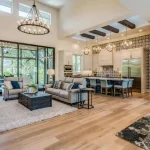The kitchen is the heart of the home, where culinary magic happens and families gather. A well-designed kitchen layout is crucial for both efficiency and style, ensuring that the space is functional and aesthetically pleasing.
This article explores various kitchen layouts, their advantages and disadvantages, and key considerations for choosing the perfect layout for your home.
Types of Kitchen Layouts
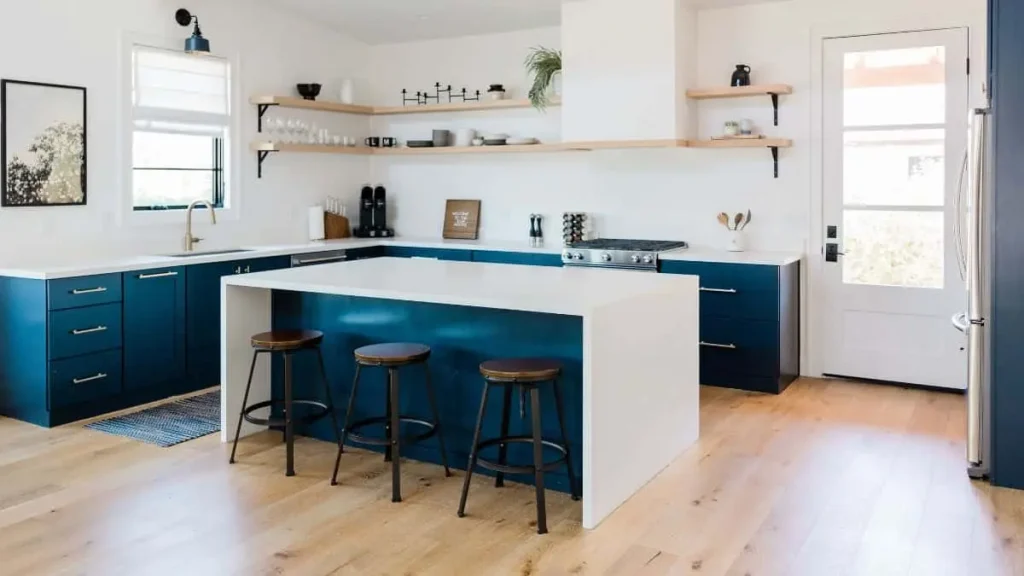
Single-Wall Kitchen
A single-wall kitchen layout, also known as a one-wall kitchen, is where all appliances, cabinets, and countertops are arranged along one wall. This layout is common in smaller homes and apartments due to its space-saving design.
Pros and Cons
Pros:
- Space-efficient
- Cost-effective
- Easy to clean and maintain
Cons:
- Limited counter and storage space
- Potentially inefficient workflow
Galley Kitchen
A galley kitchen, also known as a corridor kitchen, features two parallel walls with a walkway in between. This layout is efficient for small spaces and allows for a streamlined workflow.
Pros and Cons
Pros:
- Efficient use of space
- Excellent for small kitchens
- Easy to move between workstations
Cons:
- Can feel cramped
- Limited space for dining or socializing
L-Shaped Kitchen
An L-shaped kitchen layout features cabinets and appliances along two perpendicular walls. This design is versatile and works well in both small and large spaces.
Pros and Cons
Pros:
- Flexible layout
- Efficient work triangle
- Open to adjoining rooms
Cons:
- Can be inefficient for multiple cooks
- Corner storage can be challenging
U-Shaped Kitchen
A U-shaped kitchen layout has cabinets and appliances on three walls, creating a U-shape. This design provides ample counter space and storage.
Pros and Cons
Pros:
- Plenty of counter space
- Great for multiple cooks
- Efficient work triangle
Cons:
- Can feel closed in
- Requires ample space
Island Kitchen
An island kitchen layout includes a freestanding island in the center of the kitchen. This layout is popular for its versatility and added workspace.
Pros and Cons
Pros:
- Additional counter and storage space
- Ideal for socializing and entertaining
- Flexible design options
Cons:
- Requires significant floor space
- Can disrupt workflow if not properly planned
Peninsula Kitchen
A peninsula kitchen layout is similar to an island layout but features a connected island extending from one wall. This design provides additional workspace without taking up as much floor space as an island.
Pros and Cons
Pros:
- Additional counter and storage space
- Good for socializing
- More space-efficient than an island
Cons:
- Can create traffic flow issues
- May limit dining space
Open-Plan Kitchen
An open-plan kitchen is integrated with the living or dining area, creating a seamless flow between spaces. This layout is ideal for modern homes and open-concept living.
Pros and Cons
Pros:
- Spacious and airy feel
- Great for socializing and entertaining
- Versatile design options
Cons:
- Can lack privacy
- Requires careful planning to maintain a cohesive look
Recommended Read: Open Concept Kitchen Ideas: Design Tips and Inspirations
Key Considerations for Choosing a Kitchen Layout
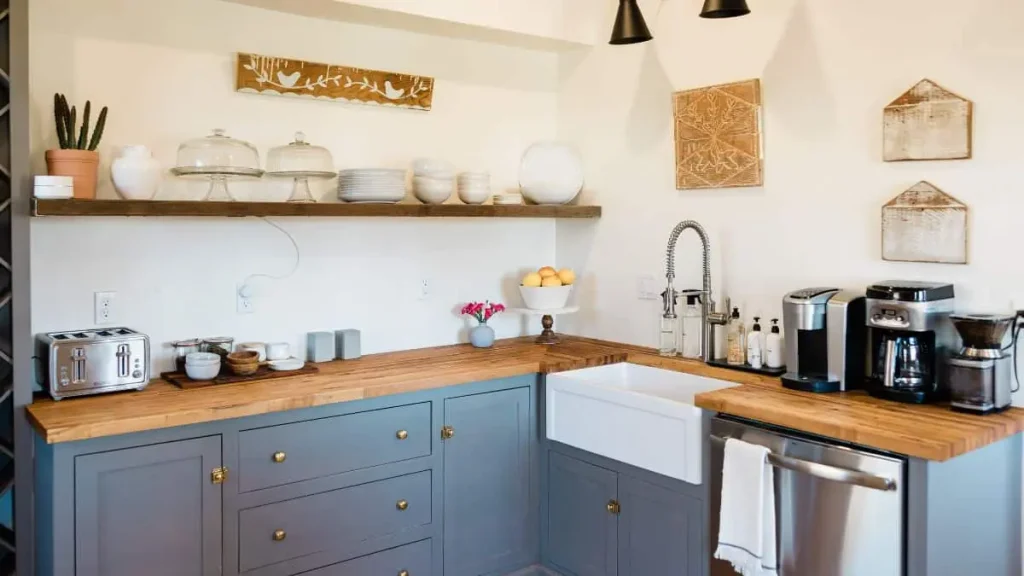
Space Available
Assessing the available space is the first step in choosing the right kitchen layout. Measure the dimensions of your kitchen and consider how different layouts will fit.
Workflow and Efficiency
The workflow in your kitchen is crucial for efficiency. The work triangle concept, which involves the sink, stove, and refrigerator, should be considered to minimize the distance between these key areas.
Lifestyle and Cooking Habits
Your cooking habits and lifestyle will influence the best layout for your kitchen. If you enjoy hosting, an island or open-plan kitchen might be ideal. For avid cooks, a layout with ample counter space and storage is essential.
Storage Needs
Consider your storage needs when choosing a layout. Cabinets, drawers, and pantry space should be sufficient to accommodate all your kitchen essentials.
Aesthetic Preferences
Your personal style and the overall design of your home should guide your kitchen layout choice. Whether you prefer a modern, rustic, or traditional look, ensure the layout complements your aesthetic.
Elements of an Efficient Kitchen Layout
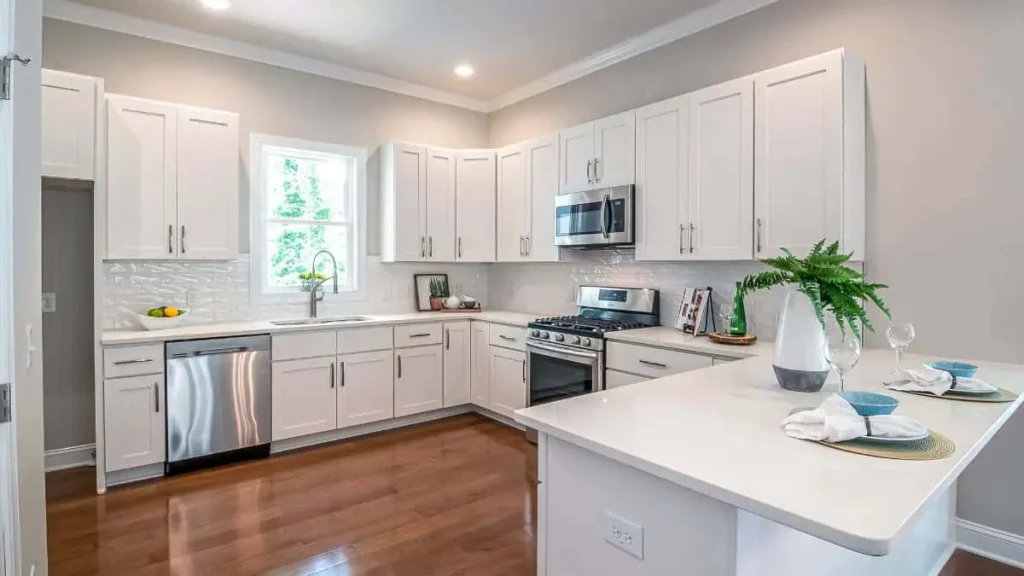
The Work Triangle
The work triangle is a kitchen design principle that ensures efficient movement between the sink, stove, and refrigerator. An optimal work triangle minimizes the distance between these key areas, enhancing productivity.
Optimal Counter Space
Adequate counter space is essential for meal preparation and cooking. Ensure your layout provides enough room for all your kitchen activities.
Storage Solutions
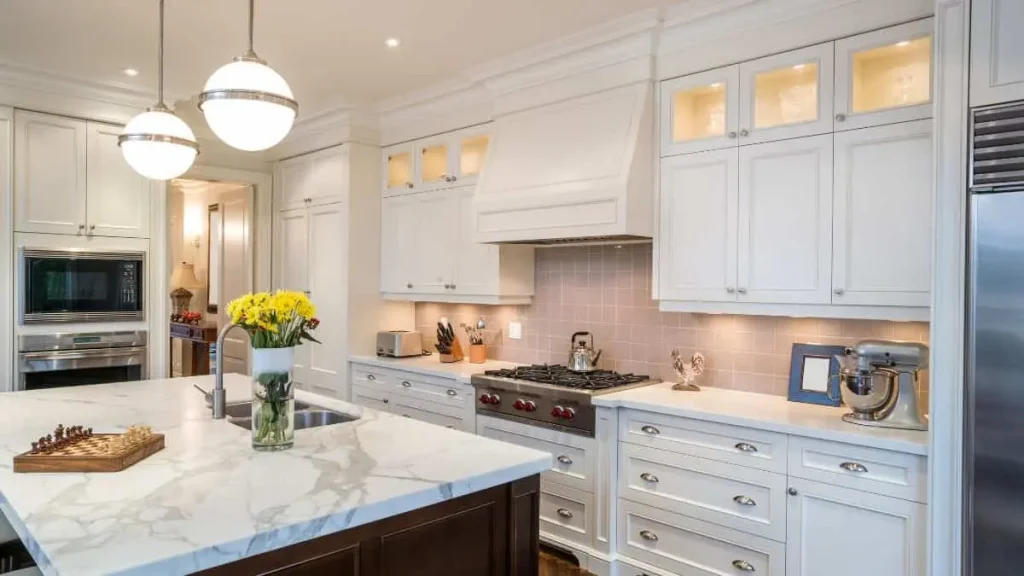
Cabinets
Cabinets are the primary storage solution in most kitchens. Consider the size, placement, and style of your cabinets to maximize storage efficiency.
Drawers
Drawers offer easy access to kitchen utensils, pots, and pans. Soft-close drawers and pull-out shelves enhance functionality.
Pantry
A well-organized pantry can significantly improve kitchen efficiency. Consider incorporating a pantry into your layout if space allows.
Appliance Placement
The placement of appliances should align with the work triangle principle. Ensure that your stove, refrigerator, and sink are positioned for optimal workflow.
Lighting Considerations
Natural Light
Maximize natural light in your kitchen through windows, skylights, and glass doors. Natural light enhances the overall ambiance and can make the space feel larger.
Task Lighting
Task lighting, such as under-cabinet lights, illuminates work areas, improving visibility for meal preparation.
Ambient Lighting
Ambient lighting provides overall illumination, creating a welcoming atmosphere. Consider pendant lights, recessed lighting, and chandeliers.
Read Also: Top 10 Kitchen Lighting Options
Integrating Style in Kitchen Layouts

Color Schemes
Popular Choices
Neutral tones like white, gray, and beige are popular for kitchen color schemes. These colors create a clean, timeless look.
Impact on Space Perception
Light colors can make a small kitchen feel larger, while darker hues add warmth and coziness to larger spaces.
Material Selection
Countertops
Materials like granite, quartz, and marble are popular for countertops. Each offers unique benefits in terms of durability and aesthetics.
Cabinets
Cabinet materials range from solid wood to laminate. Choose a material that fits your budget and design preferences.
Flooring
Durable flooring materials like tile, hardwood, and vinyl are ideal for kitchens. Consider the maintenance requirements and longevity of each option.
Backsplashes
Types
Backsplash options include tile, glass, and metal. Each type offers different styles and maintenance levels.
Trends
Current trends include geometric patterns, subway tiles, and bold colors. Choose a backsplash that complements your overall kitchen design.
Hardware and Fixtures
Styles
Hardware styles range from modern to traditional. Choose handles and knobs that align with your kitchen’s aesthetic.
Finishes
Popular finishes include brushed nickel, chrome, and matte black. Consider the finish that best matches your appliances and overall design.
Open Shelving vs. Closed Cabinets
Open shelving can create an airy feel and display decorative items, while closed cabinets offer a clean, clutter-free look. Balance both options based on your storage needs and design preferences.
Decor and Accessories
Personalize your kitchen with decor and accessories that reflect your style. Plants, artwork, and unique dishware can enhance the overall look and feel.
Specific Kitchen Layout Ideas
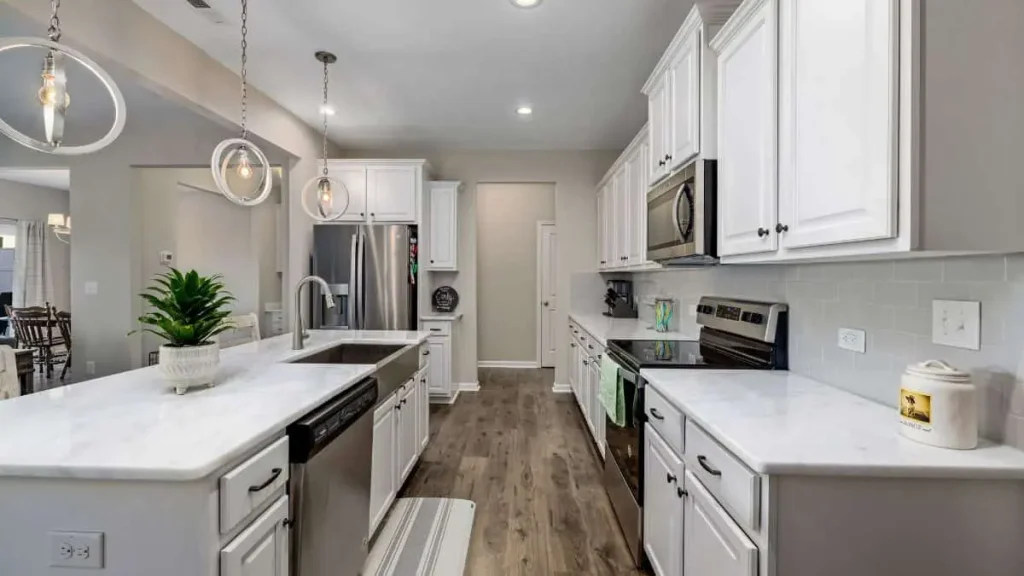
Small Kitchen Layouts
Space-Saving Tips
- Utilize vertical space with tall cabinets
- Opt for compact appliances
- Use multi-functional furniture
Design Tricks
- Light colors and reflective surfaces can make the space feel larger
- Open shelving can create an airy feel
Recommended: Small Kitchen Design Ideas
Large Kitchen Layouts
Maximizing Space
- Create distinct zones for cooking, dining, and socializing
- Incorporate an island or multiple islands
Creating Zones
- Designate areas for specific tasks, such as a baking station or coffee nook
- Use rugs or different flooring to delineate zones
Family-Friendly Kitchen Layouts
Safety Considerations
- Choose rounded countertop edges
- Install childproof locks on lower cabinets
Kid-Friendly Features
- Include a lower counter area for kids to help with cooking
- Opt for durable, easy-to-clean materials
Entertainer’s Kitchen Layouts
Hosting Essentials
- Incorporate a large island for food prep and serving
- Include a bar area or beverage station
Bar Areas
- Install a wine fridge or beverage cooler
- Include ample storage for glassware and bar tools
Modern Kitchen Layouts
Sleek Lines
- Choose minimalistic cabinet designs with clean lines
- Opt for handleless cabinets for a streamlined look
Minimalist Approach
- Keep decor simple and clutter-free
- Use a monochromatic color scheme
Rustic Kitchen Layouts
Natural Materials
- Use wood, stone, and other natural materials
- Choose distressed or reclaimed finishes
Cozy Elements
- Include a farmhouse sink
- Opt for warm, earthy colors
Technology and Innovations in Kitchen Design
Smart Appliances
Modern kitchens often feature smart appliances like refrigerators with touchscreens, voice-activated assistants, and app-controlled ovens.
Innovative Storage Solutions
Innovations like pull-out pantries, corner drawers, and modular shelving systems maximize storage efficiency.
Sustainable Materials
Eco-friendly materials like bamboo, recycled glass, and low-VOC paints are becoming popular in kitchen design.
Energy-Efficient Designs
Energy-efficient appliances, LED lighting, and proper insulation reduce energy consumption and lower utility bills.
Personal Stories and Case Studies
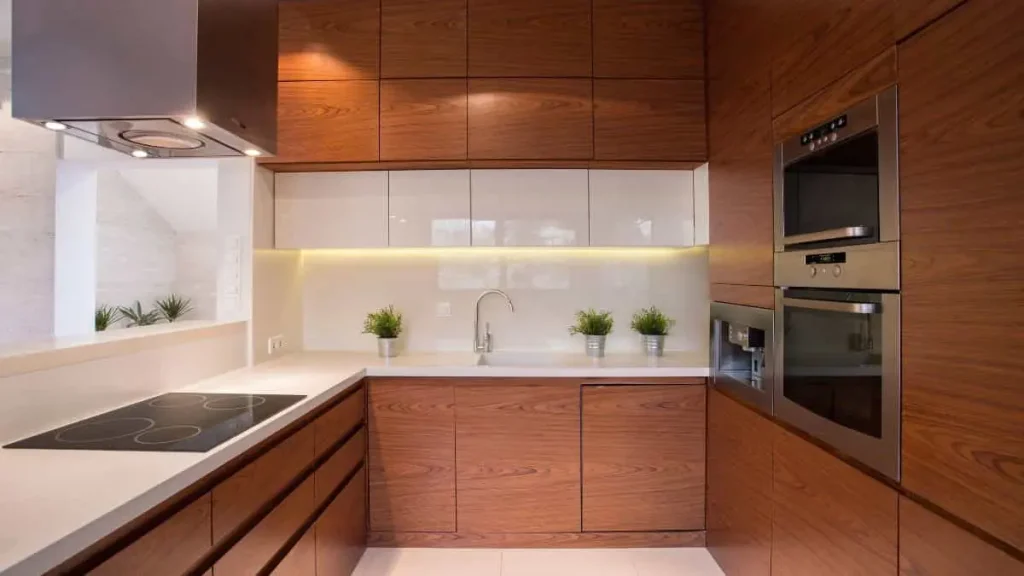
Real-Life Kitchen Remodels
Before and After
- Highlight transformations from outdated to modern kitchens
- Showcase the impact of layout changes
Challenges and Solutions
- Discuss common remodeling challenges and how they were overcome
- Include budget considerations and unexpected issues
Designer Insights
Expert Tips
- Share tips from professional kitchen designers
- Include advice on optimizing space and selecting materials
Trends to Watch
- Highlight emerging trends in kitchen design
- Discuss the future of kitchen layouts
Expert Insights
Quotes from Kitchen Designers
Incorporate quotes from renowned kitchen designers on the importance of layout, efficiency, and style.
Advice from Home Improvement Professionals
Share advice from home improvement experts on planning and executing a kitchen remodel.
Conclusion
A well-designed kitchen layout balances efficiency and style, tailored to your space and lifestyle. Consider the work triangle, storage needs, and aesthetic preferences when choosing a layout.


